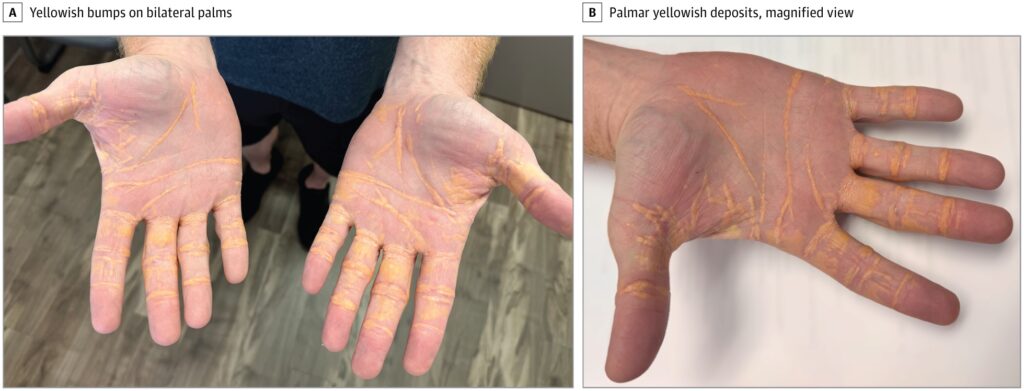Edit Content
Trending






The ISS’s orbit is slowly decaying. While it might seem a permanent fixture in the sky, the orbiting space laboratory is only about 400 km above the planet. There might not be a lot of atmosphere at that altitude. However, there is still some, and interacting with that is gradually slowing the orbital speed of the station, decreasing its orbit, and, eventually, pulling it back to Earth. That is, if we didn’t do anything to stop it.
Over the 25-year lifespan of the station, hundreds of tons of hydrazine rocket fuel have been carried to it to enable rocket-propelled orbital maneuvers to keep its orbit from decaying. But what if there was a better way—one that was self-powered, inexpensive, and didn’t require constant refueling?
A new paper published in Acta Astronautica from Giovanni Anese, a Ph.D. student at the University of Padua, and his team focuses on such a concept. It uses a new idea called a Bare Photovoltaic Tether (BPT), which is based on an older idea of an electrodynamic tether (EDT) but has some advantages due to the addition of solar panels along its length.
The basic idea behind a BPT, and EDTs more generally, is to extend a conductive boom out into a magnetic field and use the natural magnetic forces in the environment to provide a propulsive force. Essentially, it deploys a giant conductive rod into a magnetic field and uses the force on an electric field created in that rod to transfer force to where the rod is connected. It’s like the wind picking up an umbrella if the umbrella were a massive conductive rod and the wind were the planet’s natural magnetic field.
Electrodynamic tethers are not a new concept. They were initially introduced in 1968 by Giuseppe Colombo and Mario Grossi at Harvard’s Center for Astrophysics. Several demonstration missions have already taken flight, such as the TSS-1R that launched on the Space Shuttle Atlantis in 1996 and successfully deployed a 10-km long tether from the shuttle. Another experiment called the Plasma Motor Generator took place on the Russian space station Mir in 1999, which, instead of using an electromotive force to prove orbital stationkeeping, generated power directly from the tether itself.
Engineers have long considered using an EDT to perform stationkeeping duties on the ISS. However, a technical quirk made it impractical. To get the right sort of forces, the tether would need to be pointed “downward” toward the Earth or “upward” away from the planet.
No matter the direction in which the tether is pointed, it will still require power to operate. Without its magnetic field, caused by the electrical current running through it, it would act as a further drag rather than a boost. Therefore, a traditional EDT must be tied to a power system. However, if an EDT is deployed upward on the ISS, this power system would inhibit the approach corridors of capsules attempting to dock with the station.
This necessitates a downward-facing EDT so it can be connected to the ISS’s power system. While that does work, according to a prior paper published by the authors, it is less than ideal as downward-facing tethers are typically used in de-orbiting maneuvers rather than orbit-boosting ones.
Discover the latest in science, tech, and space with over 100,000 subscribers who rely on Phys.org for daily insights.
Sign up for our free newsletter and get updates on breakthroughs,
innovations, and research that matter—daily or weekly.
Enter the BPT. The main difference between it and a traditional EDT is that its surface is at least partially covered in solar panels. If there are enough of them, these solar panels can completely power the system, allowing an upward-facing BPT to operate without being tied into the ISS’s power grid and keeping the approach lanes clear for arriving spacecraft.
Mr. Anese and his team studied different options in terms of length and solar panel coverage, disregarding the tether’s weight, as the difference in weight between the tether and the ISS itself was several orders of magnitude. They found that they could counteract the relatively small force that causes a 2km/month orbital drop from the ISS by utilizing a 15 km long tether around 97% covered in solar panels, at least on one side.
A 15 km tether might sound absurdly long, and admittedly, if pointing back to the Earth, it would cover a relatively large percentage of the total distance back to the ground. However, it is well within the realm of technological feasibility, especially given that Atlantis deployed that 10 km tether almost 30 years ago.
To prove their point, the authors turned to a software package called FLEXSIM, which allowed them to simulate the orbital dynamics of an ISS attached to different lengths of BPT. The tethers they chose were only 2.5cm wide, and the solar panels were only 4.23% efficient, though that is likely affected by the fact they had to be small and flexible. With that length of solar panels, the system could provide 8.3 kW of power for the whole tether, enough to boost the ISS’s orbital path.
There are some nuances about the effects of solar activity on the forces contributing to the orbital boost, but overall, the system, at least in theory, does seem to work. However, much discussion around the ISS lately has been about its end of life, which could come as early as 2031.
So, while there are still a few good years left in the station, it likely won’t benefit as much from the BPT system as it would have a few decades ago. That being said, there will likely be a replacement in orbit someday, and it could benefit from such a system from the outset, which could save hundreds of tons of fuel in orbit over its lifetime.
More information:
Giovanni Anese et al, Bare Photovoltaic Tether characteristics for ISS reboost, Acta Astronautica (2024). DOI: 10.1016/j.actaastro.2024.12.031
Provided by
Universe Today
Citation:
A tether covered in solar panels could boost the ISS’s orbit (2025, January 21)
retrieved 21 January 2025
from https://phys.org/news/2025-01-tether-solar-panels-boost-iss.html
This document is subject to copyright. Apart from any fair dealing for the purpose of private study or research, no
part may be reproduced without the written permission. The content is provided for information purposes only.
©2024. Livebuzznews. All Rights Reserved.